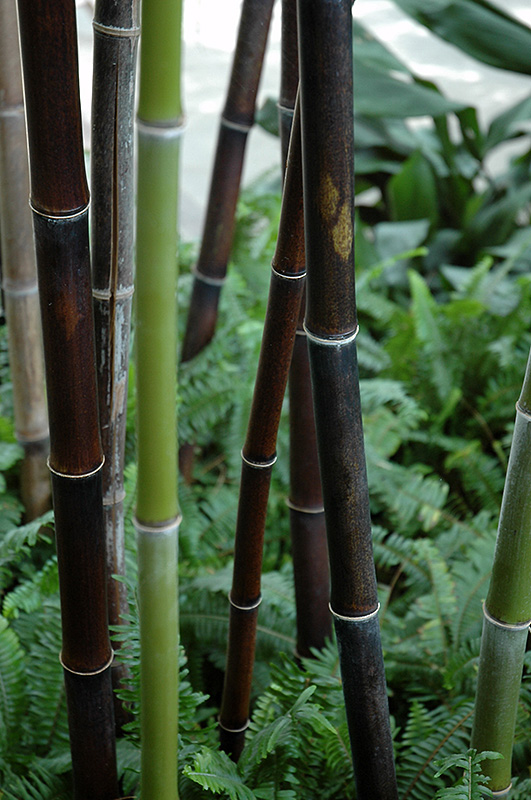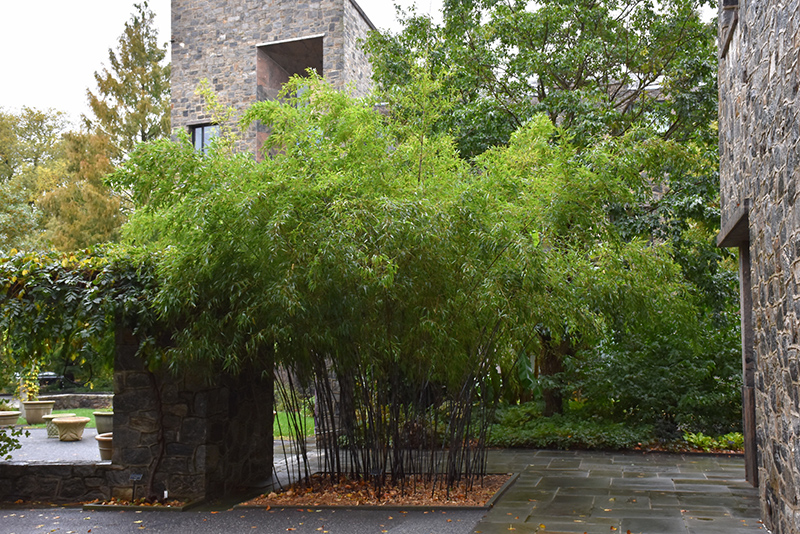>> Home
Height: 25 feet
Spread: 5 feet
Sunlight:
![]()
![]()
![]()
Hardiness Zone: 6
Description:
This popular variety is striking, with its tall, jet black culms and light, airy green foliage; will grow quite tall in ideal conditions; very impressive along borders or as a focal point, but must be controlled
Ornamental Features
Black Bamboo is primarily valued in the landscape for its pronouncedly upright and towering form. Its pointy leaves remain light green in color throughout the year. The black stems are very colorful and add to the overall interest of the plant.
Landscape Attributes
Black Bamboo is an herbaceous evergreen perennial with a rigidly upright and towering form. Its relatively fine texture sets it apart from other garden plants with less refined foliage.
This is a high maintenance plant that will require regular care and upkeep, and is best cleaned up in early spring before it resumes active growth for the season. Gardeners should be aware of the following characteristic(s) that may warrant special consideration;
- Spreading
Black Bamboo is recommended for the following landscape applications;
- Accent
- Mass Planting
- Hedges/Screening
- General Garden Use
Planting & Growing
Black Bamboo will grow to be about 25 feet tall at maturity, with a spread of 5 feet. It tends to be leggy, with a typical clearance of 6 feet from the ground, and should be underplanted with lower-growing perennials. It grows at a fast rate, and under ideal conditions can be expected to live for approximately 20 years. As an evegreen perennial, this plant will typically keep its form and foliage year-round.
This plant performs well in both full sun and full shade. It prefers to grow in average to moist conditions, and shouldn't be allowed to dry out. It may require supplemental watering during periods of drought or extended heat. It is not particular as to soil type or pH. It is somewhat tolerant of urban pollution. This species is not originally from North America. It can be propagated by division.

